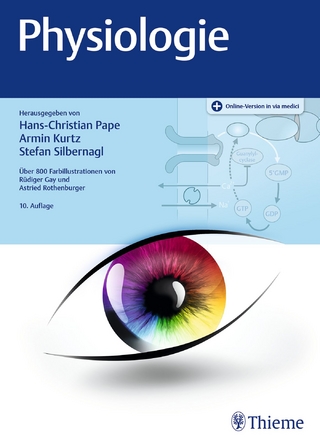
The Cerebral Circulation
Morgan & Claypool Publishers (Verlag)
978-1-61504-722-2 (ISBN)
This e-book will review special features of the cerebral circulation and how they contribute to the physiology of the brain. It describes structural and functional properties of the cerebral circulation that are unique to the brain, an organ with high metabolic demands and the need for tight water and ion homeostasis. Autoregulation is pronounced in the brain, with myogenic, metabolic and neurogenic mechanisms contributing to maintain relatively constant blood flow during both increases and decreases in pressure. In addition, unlike peripheral organs where the majority of vascular resistance resides in small arteries and arterioles, large extracranial and intracranial arteries contribute significantly to vascular resistance in the brain. The prominent role of large arteries in cerebrovascular resistance helps maintain blood flow and protect downstream vessels during changes in perfusion pressure. The cerebral endothelium is also unique in that its barrier properties are in some way more like epithelium than endothelium in the periphery. The cerebral endothelium, known as the blood-brain barrier, has specialized tight junctions that do not allow ions to pass freely and has very low hydraulic conductivity and transcellular transport. This special configuration modifies Starling's forces in the brain microcirculation such that ions retained in the vascular lumen oppose water movement due to hydrostatic pressure. Tight water regulation is necessary in the brain because it has limited capacity for expansion within the skull. Increased intracranial pressure due to vasogenic edema can cause severe neurologic complications and death.
Dr. Cipolla is Professor in the Department of Neurological Sciences and has joint appointments in Obstetrics, Gynecology, & Reproductive Science, and Pharmacology at the University of Vermont. She received her B.S. in Electrical Engineering in 1988 from the University of Vermont and her M.S. in Cell and Molecular Biology in 1994, then went on to obtain her Ph.D. in the same program in 1997. Her current research is focused on cerebral hemodynamics and blood-brain barrier function under normal and pathologic conditions including ischemic stroke and eclampsia. Dr. Cipolla is on the Editorial Boards of Stroke, Hypertension, Translational Stroke Research, and Frontiers in Physiology and has published over 100 peer-reviewed articles. She has been a member of the NINDS Stroke Progress Review Group and the Stroke Planning Workgroup, and is an advisor to the WHO Maternal and Childhood branch. Dr. Cipolla is a Fellow and Established Investigator of the AHA and is the past President of the Perinatal Research Society. She has received a number of awards, including the President's Achievement Award from the Society for Gynecologic Investigation and the Georgio Pardi Award. In 2015, she was named University Scholar by the University of Vermont. Dr. Cipolla has been continuously funded by the NIH since 1997 and has received grants from the AHA and the Preeclampsia Foundation.
Introduction
Anatomy and Ultrastructure
Perivascular Innervation
Regulation of Cerebrovascular Tone
Control of Cerebral Blood Flow
Barriers of the CNS
Summary
References
Author Biography
| Erscheinungsdatum | 19.08.2016 |
|---|---|
| Reihe/Serie | Colloquium Series on Integrated Systems Physiology: From Molecule to Function |
| Verlagsort | San Rafael |
| Sprache | englisch |
| Maße | 191 x 235 mm |
| Gewicht | 170 g |
| Themenwelt | Medizin / Pharmazie ► Medizinische Fachgebiete ► Neurologie |
| Studium ► 1. Studienabschnitt (Vorklinik) ► Physiologie | |
| Naturwissenschaften ► Biologie ► Humanbiologie | |
| Naturwissenschaften ► Biologie ► Zoologie | |
| ISBN-10 | 1-61504-722-0 / 1615047220 |
| ISBN-13 | 978-1-61504-722-2 / 9781615047222 |
| Zustand | Neuware |
| Haben Sie eine Frage zum Produkt? |
aus dem Bereich


